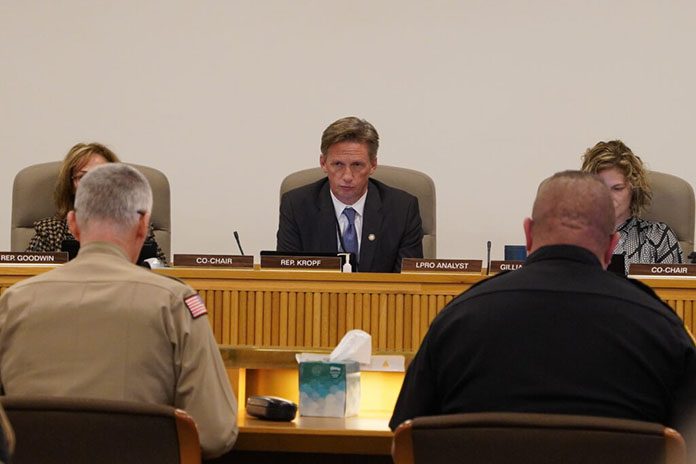
By Ben Botkin/Oregon Capital Chronicle
Police officers lack the tools they need to help drug addicts enter treatment to help them kick the habit, Oregon law enforcement officials told a legislative panel on Monday.
Oregon police officials from Portland to Hermiston spoke to Oregon lawmakers about the impact of drug addiction in their communities – and efforts to combat the wave of deadly fentanyl overdoses, open air drug use in public places and easy availability of fentanyl, which sells on streets for 80 cents to $1 a pill.
Their feedback to lawmakers on the Joint Committee on Addiction and Community Safety Response will help guide that panel as it prepares for the 2024 session and seeks legislation to improve the state’s response to the drug addiction and overdose crisis, much of it driven by fentanyl that has flooded Oregon streets.
Lawmakers are weighing potential changes to Measure 110, which decriminalized possession of small amounts of hard drugs and put a share of cannabis revenue into addiction treatment and programs involving harm reduction that’s geared toward keeping people alive and peer services, which are based on trained people who’ve battled addiction. However, the committee’s scope is about the state’s drug addiction crisis as a whole – not simply changing Measure 110.
Under Measure 110, police officers who find users with small quantities of drugs can do little other than give them a $100 citation that can be waived if they opt for an assessment to enter a treatment program. But those citations are not criminal, meaning they’re often ignored and officers cannot arrest people.
“If someone is using drugs in public, we don’t have an abatement tool,” Sgt. Aaron Schmautz of the Portland Police Bureau told lawmakers.
Like other officers who spoke, he stressed the police want tools to get people into treatment – not simply to lock them up. Those tools could include peers and addiction treatment specialists, he said.
“The cry that I hear in downtown Portland over and over is here is this person that is using fentanyl in front of my child,” he said.
But the drug addiction crisis extends well beyond Portland into rural communities like Hermiston. Jason Edmiston, that city’s chief of police, said the eastern Oregon city’s police and paramedics have administered naloxone, which reverses opioid overdoses, 57 times so far this year.
“It is safe to say that there isn’t a community in Oregon that isn’t significantly impacted by our drug addiction and fentanyl overdose crisis,” said Edmiston, who also spoke on behalf of the Oregon Association of Chiefs of Police.
Oregon police chiefs and the League of Oregon Cities, Oregon District Attorneys Association and Oregon State Sheriffs’ Association have asked lawmakers to consider a slate of changes, including the elimination of the $100 citations for drug possession and making them a misdemeanor, which carries more weight and can compel people in addiction to enter treatment. They also want lawmakers to create more ways for people with drug addiction to enter treatment, such as sobering centers and stabilization facilities to help them manage initial withdrawal symptoms, along with allocating more money for specialty court programs.
Lincoln County Sheriff Curtis Landers said that the misdemeanor charge and an arrest can be a tool that “forces the issue” so people enter programs after arrest. People are concerned, even in rural communities, and see homeless people addicted to drugs camp in parks, he said. Even the presence of one person using drugs is enough to make people worry that their safe communities and parks are in peril, he said.
“What I’m hearing from my constituents in our county is they don’t want to be like Portland, no disrespect,” he said.
Senate Majority Leader Kate Lieber, D-Beaverton and the committee’s co-chair, said afterwards that the response from law enforcement offered a consistent message: They want to reach people – and they want the means to do it.
The committee, which heard from behavioral providers and others in October, will meet twice more before the session starts in February. The goal of the committee is to incorporate public health and law enforcement into the proposals.
“One of the biggest questions is how do we get people off the streets and into treatment,” Lieber said during the meeting.
This story first appeared in the Oregon Capital Chronicle.








